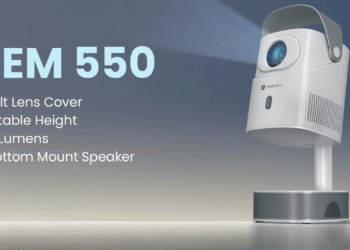Tested at Orano Melox in France’s Gard region, Hoxo is the first intelligent humanoid robot built for nuclear operations. Equipped with embedded AI and motion sensors, it will undergo a four-month evaluation by Orano and Capgemini to assess how physical AI can enhance precision, safety, and human collaboration in France’s €60 billion nuclear industry.
In a development that could reshape the future of industrial automation, Capgemini and Orano have unveiled Hoxo, the first intelligent humanoid robot designed to function inside active nuclear environments. The project, now in its testing phase at the Orano Melox Ecole des Métiers in southern France, combines robotics, artificial intelligence, and digital simulation to redefine how humans and machines collaborate in high-sensitivity sectors.
Built as a prototype for real-world use, Hoxo integrates embedded AI systems, advanced motion sensors, and real-time navigation capabilities. It is programmed to mirror human gestures, perform precise mechanical tasks, and adapt to complex surroundings typical of nuclear production sites. The initiative, jointly led by Orano’s innovation division and Capgemini’s AI Robotics & Experiences Lab, represents one of the first large-scale applications of what engineers describe as physical AI, the point where machine intelligence begins to take physical form.
Over the next four months, engineers at Orano Melox will evaluate Hoxo’s accuracy, movement agility, and responsiveness across a range of scenarios, including equipment inspection, sample handling, and technical maintenance. The trials will determine how humanoid robotics can support operators in tasks that require both precision and risk control.
Arnaud Capdepon, Director of Orano Melox, said the project is part of the company’s broader strategy to integrate intelligent systems that work safely alongside people. Hoxo represents a new dimension of assistance. It combines human-level coordination with machine endurance, which could eventually allow teams to focus on high-value tasks while improving safety, he said.
Pascal Brier, Chief Innovation Officer at Capgemini and member of its Group Executive Committee, added that the project blends multiple domains of expertise, including robotics, computer vision, and digital twins, into a single operational framework. Physical AI is not science fiction anymore. It is a way to extend human potential in environments where accuracy and safety must coexist, he said.
France’s nuclear sector, valued at over €60 billion, has long been regarded as one of the most technologically advanced in the world. The introduction of humanoid robotics marks another chapter in that legacy, combining the country’s industrial know-how with digital transformation at a practical level. As the testing continues through early 2026, Orano and Capgemini expect Hoxo to pave the way for broader industrial deployment, offering a blueprint for intelligent automation in energy and beyond.
At Prittle Prattle News, we honor your dedication and inventiveness led by showcasing you in a positive light. Under the direction of Editor-in-Chief Smruti Bhalerao, our platform is committed to disseminating powerful narratives that raise awareness and motivate change. For more important stories, follow us on LinkedIn, Instagram, and YouTub








































































































































































































































































































































































































































































